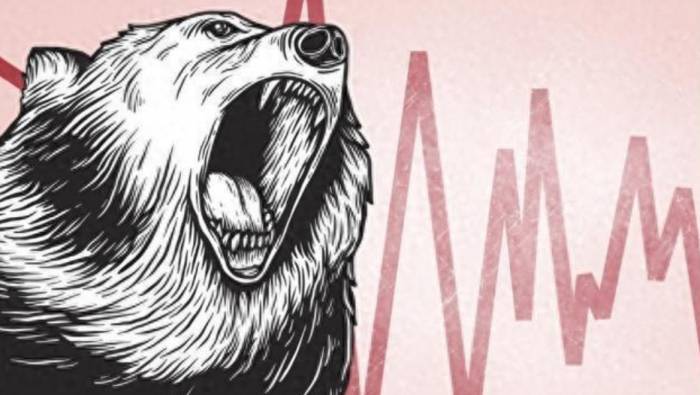Cut Rates by 50 bps, Then Another 200 bps
The Federal Reserve Wields the "Sickle": Is the A-share Market Entering the "Wolf King Era"?
"It's gone up again?!"
Xiao Zhang gazed at the ever-rising numbers in the real estate agent's window, feeling a tightening in his chest.
The pancake he had just bought in his hand seemed to turn bitter before he could take a bite.
This intangible pressure comes from the Federal Reserve's "sickle" being swung once again across the ocean - an interest rate cut.
I.
The Global "Jitterbug": The "Conspiracy" Behind the Federal Reserve's Interest Rate Cut The Federal Reserve has cut interest rates by 50 basis points at once, causing global financial markets to respond, as if they have started a tense and exciting "jitterbug" dance.
Some people are cheering and jumping, seeing an opportunity to bottom-fish; others are treading on thin ice, worried that their wealth will be swept away.
This inevitably recalls the turmoil brought by each of the Federal Reserve's "interest rate hikes" in history: the interest rate surge in 1990, the collapse of the Soviet Union; the Asian financial crisis in 1996, the fall of the Four Little Dragons; the subprime mortgage crisis in 2008, the global economy mired in the mud...
This time, with a weak US economy, the interest rate cut seems to be aimed at releasing liquidity and stimulating economic growth.
Advertisement
But the astute can see that this is nothing more than a stopgap measure of "robbing Peter to pay Paul."
The $35 trillion national debt is like a time bomb, suffocating the United States.
To fill this huge hole, the Federal Reserve has no choice but to bring out the double-edged sword of "interest rate cuts" once again.
II.
The Rise of the Eastern "Giant Elephant": A Major Change in the World Order The world is no longer a "vegetable garden" that the United States can harvest at will.
The halo of dollar hegemony is gradually fading, emerging economies are on the rise, and the global balance of power is undergoing profound changes.
China, by joining the WTO and building the "Belt and Road," has become an undeniable force on the global economic stage; India, with its infrastructure construction advancing rapidly, has a strong economic growth momentum.
The rise of these two Eastern "giant elephants" is reshaping the global resource allocation and economic pattern.
Faced with such changes, does the United States still want to shift the crisis and harvest the world through interest rate cuts?
It's not that easy.
III.
The A-share Market Enters the "Wolf King Era": Opportunities and Challenges Coexist The Federal Reserve's "sickle" is swung, and the A-share market also feels the chill.
Once the concept speculation and theme following are no longer feasible, only those leading enterprises with core competitiveness, technological advantages, and scale effects can stand firm in the "wolf-like" competition.
China's sustained economic growth provides a solid support for the A-share market.
Structural issues such as low marketization and insufficient strength of institutional investors still exist.
Fortunately, the Chinese government is actively promoting reforms, supporting the development of the real economy, and encouraging technological innovation, all of which have injected new vitality into the A-share market.
How should investors mine in the "Wolf King Era"?
Keep up with policy trends.
After the Federal Reserve's interest rate cut, China may introduce policies to stimulate consumption, and the large consumer sector may contain opportunities.
Pay attention to leading enterprises.
Choose those leading enterprises with a "moat" that can continue to develop steadily to stand invincible in market fluctuations.
Maintain rational investment.
Do not be confused by short-term fluctuations, adjust investment strategies according to market changes, and you can make a profit steadily in the "wolf-like" era.

The Federal Reserve's interest rate cut is a microcosm of the global economic change.
In this "Wolf King Era" full of challenges and opportunities, only by maintaining keen insight, flexible adaptability, and firm confidence can one ride the waves in the market and ultimately reach the other side of success.